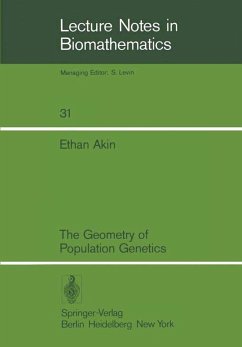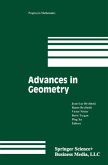The differential equations which model the action of selection and recombination are nonlinear equations which are impossible to It is even difficult to describe in general the solve explicitly. Recently, Shahshahani began using qualitative behavior of solutions. differential geometry to study these equations [28]. with this mono graph I hope to show that his ideas illuminate many aspects of pop ulation genetics. Among these are his proof and clarification of Fisher's Fundamental Theorem of Natural Selection and Kimura's Maximum Principle and also the effect of recombination on entropy. We also discover the relationship between two classic measures of 2 genetic distance: the x measure and the arc-cosine measure. There are two large applications. The first is a precise definition of the biological concept of degree of epistasis which applies to general (i.e. frequency dependent) forms of selection. The second is the unexpected appearance of cycling. We show that cycles can occur in the two-locus-two-allele model of selection plus recombination even when the fitness numbers are constant (i.e. no frequency dependence). This work is addressed to two different kinds of readers which accounts for its mode of organization. For the biologist, Chapter I contains a description of the entire work with brief indications of a proof for the harder results. I imagine a reader with some familiarity with linear algebra and systems of differential equations. Ideal background is Hirsch and Smale's text [15].
Hinweis: Dieser Artikel kann nur an eine deutsche Lieferadresse ausgeliefert werden.
Hinweis: Dieser Artikel kann nur an eine deutsche Lieferadresse ausgeliefert werden.








